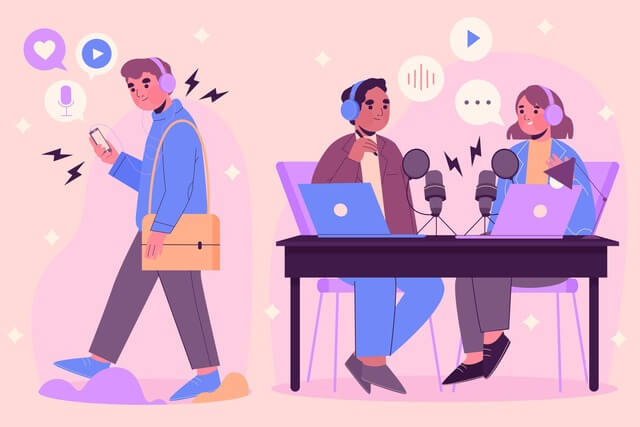Teaching listening is one of the most important things when you’re learning a language, the main reason to affirm this is because listening is the way we learn new things.
Since teaching listening is very important, we have to be very careful in the criteria that we use to select what students are going to hear inside of the classroom.
Table of Contents
Authentic Materials
We have resources that have been created with the sole intention to teach listening to students. There are also resources which have been created for any other purpose and not necessarily for teaching English.
Authentic resources or authentic materials seek to provide a better experience for the English language learners since those materials mimic what happens in real situations.
One of the reasons because authentic materials are so important is due to the fact that such materials were created targeting an English-speaking audience so we don’t see examples of simplification in the listening passages which are authentic.
We can get those materials easily in this day and age from the internet. With a few clicks you can download a video from YouTube, a podcast about a wide variety of topics, a Ted talk or any other Listening material of that kind.
Problems with Authentic Materials
The advantages of authentic materials are also the disadvantages since authentic listening passages are problematic to English language learners who are expecting some level of predictability in what they listen.
Authentic materials also create problems for teachers since trying to find the perfect listening passage can be time-consuming especially when you have to consider the level of the students and that problem increases when you’re teaching low-level learners.
These are some questions that you should also consider when using authentic materials to teach listening.
| Feature | Questions to Ask |
| Interest | Will the passage be interesting to my students? |
| Cultural Acess | Will students be able to understand the context? |
| Speech Acts | Does the passage contains speech acts? |
| Density | Does the information comes fast? |
| Level | Is the vocabulary and grammar appropriate for the level? |
| Quality | Is the recording clean? |
| Speed | Does the speakers speed to fast? |
| Speaker | is the numbers of speaker causing any confusion? |
| Accent | Is the accent familiar to the learners? |
Recommendation when Choosing Authentic Materials
Since using authentic materials creates some problems in the English classroom, professionals have tried to give some recommendations about their use.
For example some people consider that authentic materials shouldn’t be used with low-level learners, these professionals consider that you should start with listening passages that target an English learning audience and you can move gradually until you get to the point in which you can expose learners to listening passages who were not targeting English learning audiences.
Other experts consider that you can use authentic materials with low level learners as long as you prepare the lesson in a way that will not discourage students.
Should we Use Authentic Materials?
Some of the reasons because people turn to authentic materials to teach classes is because they think that those materials who have been created by linguists or other language professionals don’t mimic the real language that is usually spoken outside of the classroom and textbooks.
I think that’s such an idea is outrageous because most textbooks are created by professionals who speak English as their first language So I don’t see why we should expose students to English which could be a source of problems instead of a solution in the first stages.
Conclusion
To summarize my ideas I think that authentic materials can be beneficial to students in some ways. I don’t necessarily think that the exposure to what people call real English has to happen inside of the classroom necessarily.
For instance, I consider the students can learn a lot during their spare time by listening to passages in English related to things that they like. I think that the best solution for the problem of authenticity is teachers providing examples of real English in every single piece of information they give inside of a classroom.
The other conclusion that I consider valuable is using common sense to deal with particular choices about what can be advantageous and what can discourage learners in their quest of learning English.
More Teaching Listening Resources
These are some resources that might help you do a better job when teaching listening


